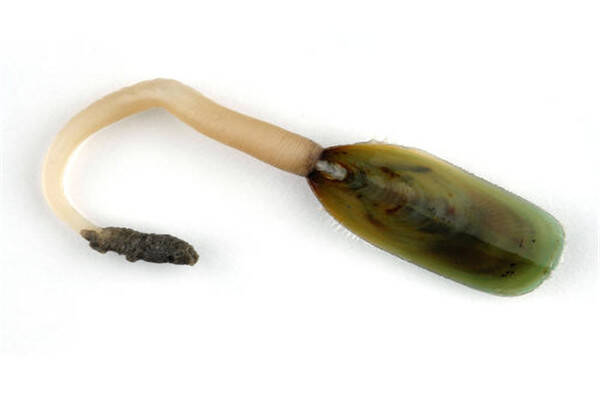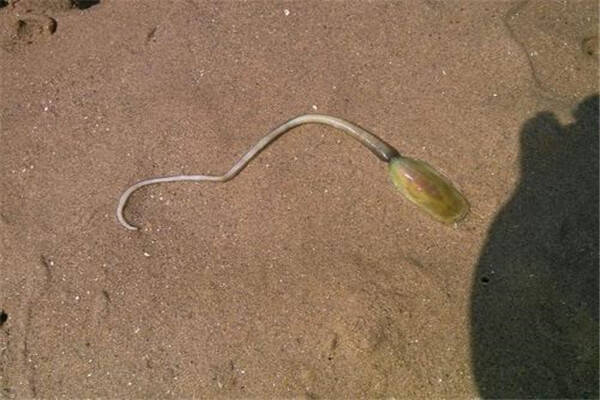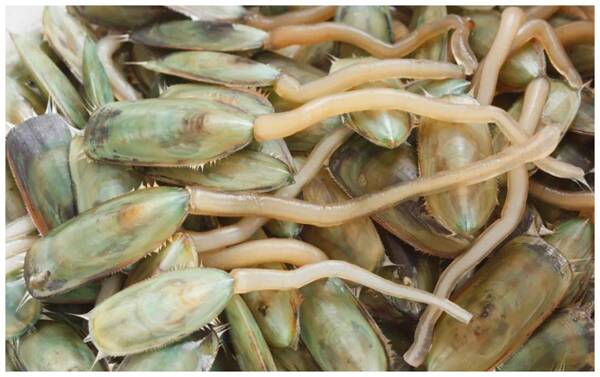Lingula
IUCN
LCBasic Information
Scientific classification
- name:Lingula
- Scientific Name:Lingula
- Outline:Brachiopoda
- Family:O.linguiniformes F.linguiniformes G.linguiniformes
Vital signs
- length:Approx. 40 mm
- Weight:
- lifetime:
Feature
The tongue-shaped shell is a genus with a long history of existence among the organisms discovered in the world and is a famous "living fossil".
Distribution and Habitat
It lives in temperate and tropical waters. Its fleshy stem is thick and long, and it can live in caves on the seabed. The fleshy stem can freely expand and contract in the cave. It spends most of its time in the cave, and only relies on three tubes on the mantle to contact the outside world.
Appearance
The shell of the tongue-shaped clam is tongue-shaped or long oval, with a tapering rear edge and a straight front edge. The two shells are similar in convexity and are of nearly equal size, but the ventral shell is slightly longer. The shell wall is brittle and thin, with chitin and apatite interlayered. The shell surface is oily and lustery, and decorated with concentric patterns. The fleshy pedicle is very long, extending from between the two shells, buried deep in the burrow, and leaving a triangular groove on the pseudo-hinge surface of the ventral shell, called the pedicle groove. The edge of the mantle has bristles, which promote water to enter the carpal cavity from the front sides and then be discharged from the front center. The two shells of the small tongue-shaped clam are equal in size, long oval to sub-triangular, with a rounded front edge. The posterior edge of the ventral shell is relatively sharp, with a clear pseudo-hinge surface and pedicle groove. The dorsal shell is
Details
The oldest organism on earth is Lingula. Lingula, commonly known as sea bean sprouts, is the genus with the longest survival history among the organisms discovered in the world. It is a famous "living fossil" and lives in temperate and tropical waters. It is an arthropod with a shell tongue-shaped or long oval shape. The shell is composed of chitin, the shell wall is brittle and thin, and chitin and apatite are alternately layered. A class of brachiopods including existing and ancient extinct types. It was first seen in the Cambrian system and probably originated before the Cambrian period.

The tongue-shaped shell is tongue-shaped or long oval, with a pointed rear edge and a straight front edge. The two shells have similar convexity and are of similar size, but the ventral shell is slightly longer. The shell wall is brittle and thin, with chitin and apatite interlayered. The shell surface is greasy and decorated with concentric patterns. The fleshy pedicle is very long, extending from between the two shells, deeply buried in the burrow, and leaving a triangular groove on the pseudo-hinge surface of the ventral shell, called the pedicle groove. The edge of the mantle has bristles, which promote water to enter the wrist cavity from the front sides and then discharge from the front center. The two shells of the lingula are equal in size, long oval to sub-triangular, with rounded front edges. The posterior edge of the ventral shell is relatively sharp, with a clear pseudo-hinge surface and pedicle groove. The dorsal shell is slightly shorter. The shell surface has concentric patterns, sometimes in intermittent layers, or with radial patterns.

In 2004, it was reported that the latest tongue-shaped shell-type brachiopod discovered in the Chengjiang fossil reservoir was the Haikou Xishan shell.

Lingula are small, articulated brachiopods with shells composed of chitin. The living genus (Lingula) is found in normal marine environments, but is more common in muddy, oxygen-poor brackish waters that are unsuitable for most organisms. Lingulella is a Cambrian fossil, similar in appearance and structure to the modern genus Lingulella. Lingulepis (roughly limited to the Late Cambrian) is different in appearance from other lingulella, and is more teardrop-like in shape. Lingulella are useful fossils for providing environmental information; they are not very useful for stratigraphic comparison; they are important members of the Cambrian brachiopod group.
